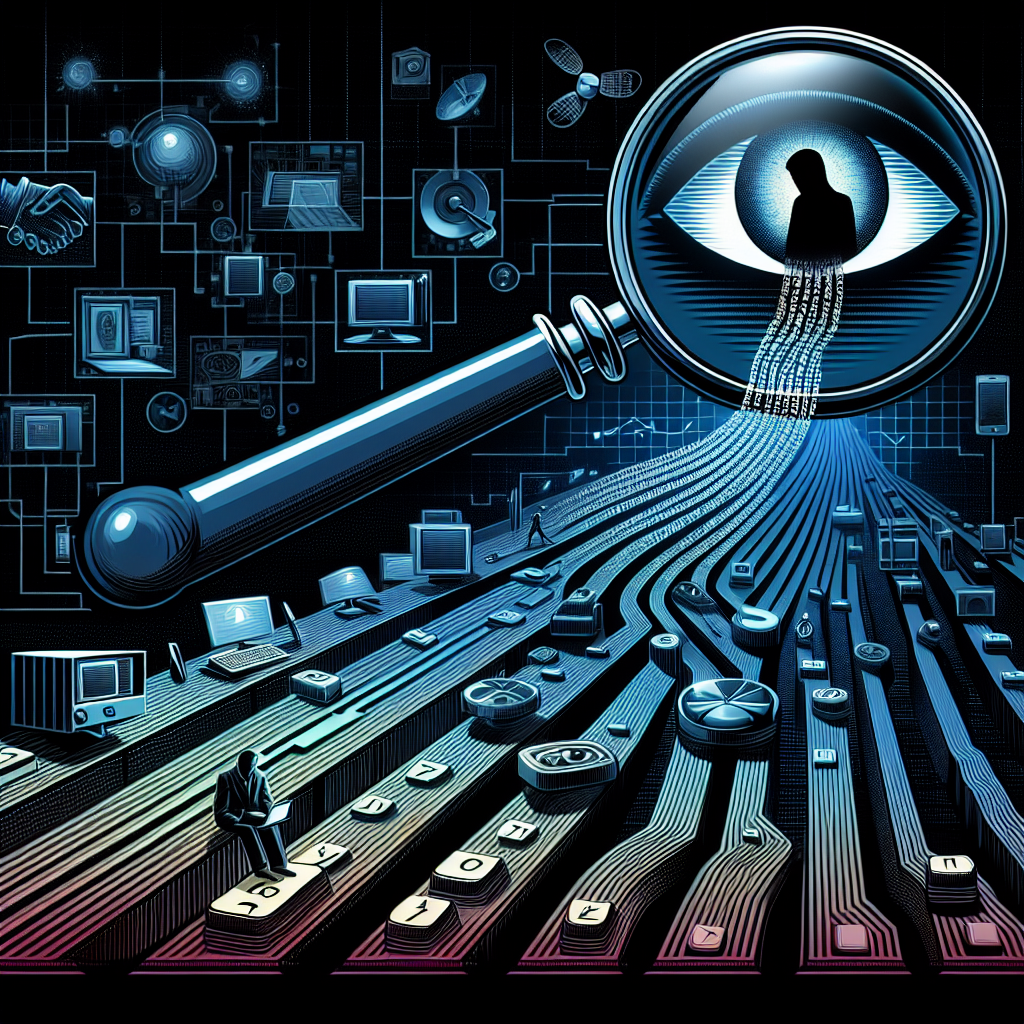
Introduction
In an era where technology reigns supreme, our lives have become so intertwined with digital platforms that they offer a two-sided coin of convenience and peril. As we navigate this new landscape, one significant but often overlooked issue has emerged: stalking in the digital age. Technology not only connects us but can also facilitate obsessive behaviors that lead to harassment, invasions of privacy, and emotional trauma. Understanding how these advancements can foster harmful behaviors is crucial, as is knowing how to protect oneself against them. This article explores stalking in the digital age: how technology facilitates obsession, highlighting real-world implications, preventive measures, and much-needed awareness.
The Evolution of Stalking
Before delving into the specifics of digital stalking, it’s essential to recognize how the concept of stalking has evolved over the years. Traditionally associated with physical proximity, stalking has expanded to include various forms of electronic communication. According to the Bureau of Justice Statistics, nearly 7.5 million people in the United States are stalked annually, and this number continues to rise as technology becomes more pervasive.
The Transition from Offline to Online
With the advent of social media, mobile phones, and location-tracking apps, stalkers now have unparalleled access to their victims. They can monitor online activity, track movements, and invade personal privacy with just a few clicks. For victims, this transition can feel like a nightmare with no safe haven, as the digital world often leaves them vulnerable.
Case Study 1: The Instagram Stalker
In one real-world case, a young woman named Sarah became the target of an obsessive follower on Instagram. Initially, she did not perceive his frequent likes and comments as threatening. However, he began to acquire her information from posts and stories, even showing up at places she frequented. The psychological toll was profound, leading Sarah to change her routines and ultimately delete her account.
Analysis: This case illustrates the unforeseen consequences of seemingly harmless interactions on social platforms. What began as benign engagement escalated into a distressing situation when technology enabled the stalker to leverage available information against the victim.
The Tools of the Trade
Understanding stalking in the digital age: how technology facilitates obsession requires an exploration of the tools employed by stalkers.
Social Media Platforms
Social media has revolutionized communication but also provided stalkers with a goldmine of information. Platforms like Facebook, Twitter, and Snapchat allow for real-time updates on users’ lives, making it easier to harass victims.
Statistics Table: Social Media Usage and Stalking Incidents
| Social Media Platform | Percentage of Stalking Cases Reported |
|---|---|
| 52% | |
| 30% | |
| Snapchat | 12% |
| 6% |
Mobile Applications
Mobile technology has taken this obsession to another level. Apps designed for location tracking, messaging, and even dating facilitate dual interactions—both benign and malicious.
Case Study 2: The Dating App Incident
A man used a dating app to connect with Lisa, a woman looking for companionship. Their initial chats turned sinister when he began to text her incessantly, demanding to know her whereabouts. In a shocking escalation, he utilized the app’s location features to track her movements, eventually leading to her being followed in person.
Analysis: This scenario demonstrates how dating apps can be weaponized for stalking. Instead of promoting relationships, they can become tools for control and obsession.
Spyware and Surveillance Technology
With the rise of spyware, stalkers can invade their victims’ privacy without their knowledge. This technology can be installed on devices, enabling someone to monitor calls, texts, and even cameras.
Key Indicators of Digital Stalking
- Excessive Messaging: Constant calls, texts, or social media interactions.
- Unwanted Gifts: Stalker may use physical gifts as a means of control.
- Following on Social Media: Not just following, but obsessively engaging online.
Legal Perspectives on Digital Stalking
Current Legislations
As stalking in the digital age: how technology facilitates obsession becomes increasingly relevant, legal frameworks are struggling to catch up. While many states have laws against stalking, enforcement varies significantly, often depending on the medium used.
Resources Table: Laws on Stalking by Country
| Country | Key Legislation |
|---|---|
| USA | Violence Against Women Act (VAWA) |
| UK | Protection from Harassment Act 1997 |
| Australia | Stalking Laws vary by state; generally covered under criminal law |
Challenges for Law Enforcement
Digital stalking presents unique challenges for law enforcement, including jurisdictional issues and the complexities of digital evidence. Many cases go unreported due to victims feeling helpless or unsure of how to proceed.
Protecting Yourself in the Digital Realm
Awareness and Education
Understanding the signs and knowing how to protect oneself is crucial. Knowledge is power.
Privacy Settings
Reviewing and adjusting privacy settings on social media platforms can limit exposure. Teach victims to lock their profiles and turn off location sharing.
Reporting Mechanisms
Encourage victims to report online harassment. Platforms have increasingly created reporting tools to manage abusive behaviors.
Resources Table: Reporting Options by Platform
| Platform | Reporting Mechanism |
|---|---|
| Community Standards Enforcement | |
| In-app reporting tools for harassing behavior | |
| Report tool including options for abuse and threats |
The Psychological Impact of Stalking
Emotional Trauma
Victims often experience profound emotional distress. The fear and anxiety stemming from being stalked can have lasting psychological effects, including PTSD.
Support Groups and Resources
Victims should consider reaching out to support organizations that specialize in stalking. These groups can provide emotional and legal assistance.
Case Study 3: The Survivor’s Journey
Emma, who suffered from online stalking for years, eventually found solace in community support groups. Through therapy and empowerment sessions, she reclaimed her life, learning how to mitigate risks in her digital interactions.
Analysis: Emma’s experience underscores the importance of support networks in healing from stalking-related trauma. The shared understanding within these communities can empower others to recognize their situations and seek help.
Preventive Measures for Individuals and Society
Technology Literacy
In an age where technology is omnipresent, individuals must become savvy about the tools they use. This includes understanding app permissions and data privacy.
Community Engagement
Schools and local organizations should implement educational programs focusing on the dangers of digital stalking, equipping individuals with the knowledge to protect themselves.
Collaboration with Tech Companies
Encouraging technology companies to adopt robust anti-stalking measures can ensure user safety. Features such as advanced reporting mechanisms and heightened privacy controls will help combat these tendencies.
Conclusion
As we explore stalking in the digital age: how technology facilitates obsession, it becomes clear that technology can serve as both a bridge and a barrier. While it connects us, the same tools can also enable malicious behavior. Awareness, preventive measures, and legal protections are more important than ever. Everyone has the right to feel safe in both the physical and digital realms. Let’s foster an informed community that stands united against stalking and embraces responsible technology use.
FAQs
1. What constitutes digital stalking?
Digital stalking involves harassing or monitoring someone through electronic means such as social media, texts, and locations without their consent.
2. How can I protect myself from digital stalking?
Utilizing privacy settings, being cautious about sharing personal information online, and reporting any harassing behavior can help protect you.
3. Are there laws against digital stalking?
Yes, many countries have laws against stalking, but these laws vary and may evolve as technology changes.
4. What should I do if I think I am being stalked?
Document everything, contact law enforcement, and reach out for support. Don’t ignore your experiences, as they are valid.
5. How can communities educate themselves about digital stalking?
Schools, local organizations, and community workshops can provide information on the signs of stalking and preventive measures.
By fostering awareness and encouraging preventive strategies, we can pave the way for a safer digital landscape for all.
















